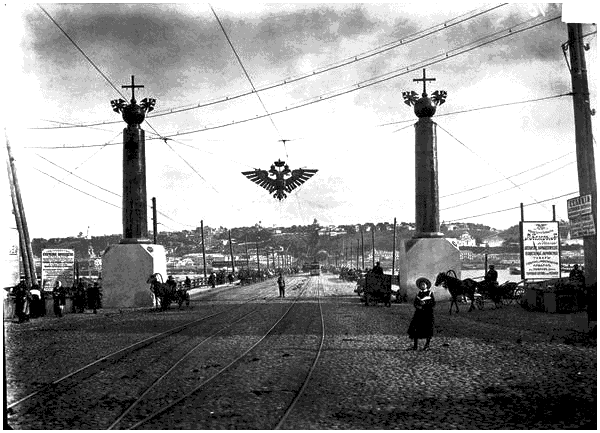An American Tragedy in Stalin's Russia
Tim Tzouliadis
(Penguin)
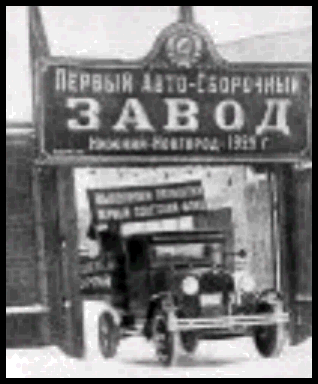
- In the early 1950s, I met an old friend of my father's, an engineer who had worked in the Soviet Union during the 1930s. The Engineer was still more or less pro-Soviet, but his manner was very different from that of the rest of my father's circle of fellow-travellers. Their political conversation was glib, full of "progressive" clichés, and, even to my young teenage ears, suspiciously superficial. The Engineer, in contrast, was not glib at all. He spoke little, and what he did say always had specificity (I ascribed this to his being an engineer), and a skeptical, decidedly bitter humour. He was a very somber character. He seemed, in short, a man who had seen a lot that the other members of my father's circle of dilettante Leftists would not understand. Perhaps what he had seen was some of the story told by Tim Tzouliadis in The Forsaken."
The book under review tells the story of a little-known and somewhat unusual group of victims of the Great Terror in the USSR. In the early 1930s, a few thousand Americans went to the Soviet Union to work, many of them in the belief that the move was temporary. Some of these individuals were idealistic Communists, who wished to contribute to the building of socialism. Others, less overtly political although perhaps vaguely sympathetic to the USSR, were leaving the USA in the depths of the Great Depression primarily to find work. Finally, another group of several hundred were employees of the Ford Motor Company. In 1929, the arch-capitalist Henry Ford, after reassuring himself that Stalin had no trace of Jewish blood, had signed a 40 million dollar deal to erect a complete Model A manufacturing facility in the USSR. The agreement called for a contingent of Ford workers to get production going and to train the Russian workforce. So, between August of 1930 and November of 1931, a giant Ford car plant was built outside of Nizhni Novgorod, an old city on the Volga some 200 miles east of Moscow. Stalin, who admired American industry, hoped that it would become the Soviet Detroit. The American workers called it "Nizhny New York," and the Soviet authorities renamed it Gorky.
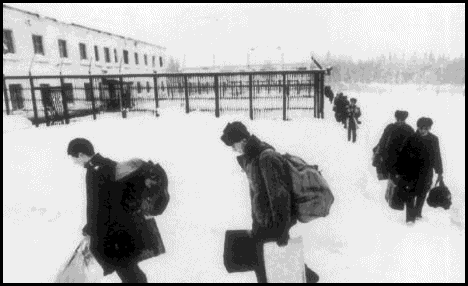 For the first few years, the Americans were welcomed, and some learned Russian and put down roots of a sort. Others worked for a time and then decided to return home. At first, this was not difficult. Walter Reuther (later president of the UAW) and his brother Victor worked briefly at Nizhny Ford, and returned to the US in 1935. By then, however, many of the Americans began to encounter bureaucratic difficulties, like those described in this note hand-delivered to the new US embassy in Moscow in 1935: "After 8 months of work I decided to go back to the United States. ....they told me they are not going to give me papers, because they need me as a specialist in the factory. ...They scared me with threats to put me in jail. ...They told me they would rather kill a person like me than let him out of the country." Some American workers found that the Soviet authorities, who had taken their American passports "temporarily" for safekeeping when they entered the USSR, would not return the passports. The Americans found themselves trapped. And trapped in a maelstrom typified, at the top level, by the Moscow Trials of 1936, 1937, and 1938. Before continuing with the book's story of the Americans, let us briefly recall these trials and what they meant.
For the first few years, the Americans were welcomed, and some learned Russian and put down roots of a sort. Others worked for a time and then decided to return home. At first, this was not difficult. Walter Reuther (later president of the UAW) and his brother Victor worked briefly at Nizhny Ford, and returned to the US in 1935. By then, however, many of the Americans began to encounter bureaucratic difficulties, like those described in this note hand-delivered to the new US embassy in Moscow in 1935: "After 8 months of work I decided to go back to the United States. ....they told me they are not going to give me papers, because they need me as a specialist in the factory. ...They scared me with threats to put me in jail. ...They told me they would rather kill a person like me than let him out of the country." Some American workers found that the Soviet authorities, who had taken their American passports "temporarily" for safekeeping when they entered the USSR, would not return the passports. The Americans found themselves trapped. And trapped in a maelstrom typified, at the top level, by the Moscow Trials of 1936, 1937, and 1938. Before continuing with the book's story of the Americans, let us briefly recall these trials and what they meant.
The first Moscow Trial, in August of 1936, prosecuted Kamenev, Zinoviev (both among Lenin's oldest collaborators) and fourteen other old Bolsheviks for belonging to the alleged "Trotskyite-Zinovievite Terrorist Centre." The defendants were lamentably reluctant to confess at first, but after some special treatment, they all confessed their long-term conspiracy to assassinate the Party leaders, particularly its beloved General Secretary, the ineffable Josef Stalin. Additional evidence of the conspiracy was explained by the scholarly prosecutor Andrei Vyshinsky as follows: "Shoot these rabid dogs. Death to this gang who hide their ferocious teeth, their eagle claws, from the people! Down with that vulture Trotsky, from whose mouth a bloody venom drips, putrefying the great ideals of Marxism!... Let's exterminate the mad dogs of capitalism."
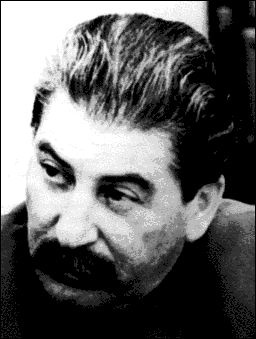 The following January, a show trial of Radek, Piatakov, and fifteen other old Bolsheviks revealed an even more far-flung conspiracy. Radek, in his confession, recounted the existence of "semi-Trotskyites, quarter-Trotskyites, one-eighth Trotskyites, people who helped us, not knowing of the terrorist organization but sympathizing with us." In June of 1937, a secret military trial condemned Marshal Tukhachevsky (a hero of the Red Army during the civil war) and other senior military commanders to death for similar offenses. In the West, the pro-Communist Left greeted the trials with breathless enthusiasm. The British Daily Worker gushed: "the trials in Moscow represent a new triumph in the history of progress." In the USA, Corliss Lamont and Lillian Hellman signed "An Open Letter To American Liberals" in support of the trials for the March 1937 issue of Soviet Russia Today.
The following January, a show trial of Radek, Piatakov, and fifteen other old Bolsheviks revealed an even more far-flung conspiracy. Radek, in his confession, recounted the existence of "semi-Trotskyites, quarter-Trotskyites, one-eighth Trotskyites, people who helped us, not knowing of the terrorist organization but sympathizing with us." In June of 1937, a secret military trial condemned Marshal Tukhachevsky (a hero of the Red Army during the civil war) and other senior military commanders to death for similar offenses. In the West, the pro-Communist Left greeted the trials with breathless enthusiasm. The British Daily Worker gushed: "the trials in Moscow represent a new triumph in the history of progress." In the USA, Corliss Lamont and Lillian Hellman signed "An Open Letter To American Liberals" in support of the trials for the March 1937 issue of Soviet Russia Today.
Then in March 1938, came the trial of Nikolai Bukharin (whom Lenin had called "the favorite of the whole Party") and twenty others, called the "Bloc of Rightists and Trotskyites." They too were all revealed by the prosecution to be rabid dogs, mad dogs, and vultures, as well as conspirators working since 1918, if not earlier, on behalf of Trotsky, world capitalism, Britain, Japan, and Germany. The 1938 defendants included none other than Genrikh Grigor'evich Yagoda, who had been head of the NKVD, the secret police that had arrested all the previous defendants of 1936 and 1937. Yagoda's inclusion in the new bloc of Trotskyite conspirators showed that the Great Purge had evolved into the Great Terror: it had taken on a deranged momentum of its own, such that virtually anyone (other than perhaps Comrade Stalin himself) might end up in the dock.
While the Moscow trials of Bolshevik big-shots received world publicity, the NKVD was busily arresting people all over the country, and each arrest generated more arrests by a simple autocatalytic process. Each group of suspects was invited (with the usual kinds of urging) to name more suspects; the new suspects were then duly arrested and forced to give still more names, who were in turn arrested, and so on. Ultimately, somewhere between five- and twenty-million people were caught up in the process. Some groups were more heavily represented than others, particularly Old Bolsheviks (as the Moscow Trials implied) and writers: Of the 700 Soviet writers who attended the first Congress of Soviet Writers in 1934, only fifty survived the Terror. (This history gives rise to a Soviet proverb: "If you think, don't speak; if you speak, don't write; if you write, don't publish; if you publish, recant immediately!") Of the arrested suspects, somewhere between around 800,000 and a few million were "liquidated," to use that quaintly chemical term popularized by the progressive and peace-loving USSR.
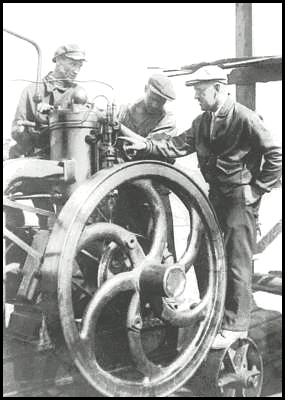 This was the society in which the American emigrants and "temporary" workers found themselves trapped. In fact, the hunt for Trotskyite-Zinovievite-Bukharinite witches was preceded several years earlier by a hunt for wreckers to blame for the failures of the Bolshevik economy. There had been purges of economic planning staff for not planning miracles, of industrial engineers for failing to achieve the prodigies claimed in Party propaganda, and of meteorologists for undermining the peoples' morale by sometimes predicting bad weather. Some of the victims were paraded in the Shakhty Trial (1928) and the Industrial Party Trial (1930), with preposterous coerced confessions and (in the latter show trial) Vyshinsky as prosecutor, veritable previews of the Moscow Trials that were to come later. The American emigrants, most of whom had depended on the likes of Lillian Hellman, Corliss Lamont, and Soviet Russia Today for their conception of life in the USSR, had no idea of what was in store for them.
This was the society in which the American emigrants and "temporary" workers found themselves trapped. In fact, the hunt for Trotskyite-Zinovievite-Bukharinite witches was preceded several years earlier by a hunt for wreckers to blame for the failures of the Bolshevik economy. There had been purges of economic planning staff for not planning miracles, of industrial engineers for failing to achieve the prodigies claimed in Party propaganda, and of meteorologists for undermining the peoples' morale by sometimes predicting bad weather. Some of the victims were paraded in the Shakhty Trial (1928) and the Industrial Party Trial (1930), with preposterous coerced confessions and (in the latter show trial) Vyshinsky as prosecutor, veritable previews of the Moscow Trials that were to come later. The American emigrants, most of whom had depended on the likes of Lillian Hellman, Corliss Lamont, and Soviet Russia Today for their conception of life in the USSR, had no idea of what was in store for them.
By the time of the Moscow Trials, the hunt for wreckers, spies, Trotskyites, and foreign agents had all merged. Comrade Stalin himself made this clear in a 1937 speech: "First, the wrecking, diversionists and espionage work of the agents of foreign countries, among who, a rather active role was played by the Trotskyites, affected more or less all, or nearly all, our organizations --- economic, administrative and Party." Foreigners such as Americans in the USSR, particularly those working in new and therefore inefficient industrial plants, might as well have had bull's-eyes painted on the backs of their necks. Most of the Americans who had not left by 1935 ended up either liquidated or in the gulag.
Many died in the gulags, some survived, and a few of these survivors wrote about their experience themselves, or were interviewed by Tim Tzouliadis in preparation for writing The Forsaken. With such a story, the author can be forgiven for a prose style which is sometimes a little overwrought. His subjects are slightly exotic only in that this small group had actually moved from the USA to the Terror-haunted Soviet Union of the 1930s to join the millions of native victims.
As the harassment and then arrest of the Americans mounted from 1935 on, many of them made frantic attempts to gain some assistance from the American embassy in Moscow. They received almost no help (the significance of the book's title) for two richly ironic reasons. First, most of the embassy staff viewed them as Communists, and so had little sympathy for their plight. And the embassy, especially under the leadership of Ambassador Joseph Davies, concentrated on currying favor with Stalin and with the Soviet authorities, i.e. with the police state run by actual Communists in power. With the help of that very Soviet government, Ambassador Davies and his heiress wife accumulated a wonderful collection of Russian art during their tour of duty in Moscow, which they happily displayed to other socialites when they returned to the USA.
An even more brutal irony transpired after the Nazi-Soviet pact of mutual friendship in August of 1939. The Soviets demonstrated their devotion to their new friends by transferring over to the Gestapo all the German Communists in the gulag. After Hitler double-crossed Stalin by invading in 1941, the USSR and the USA found themselves allied against the USSR's former friend, the Third Reich. But even during World War II, when the USSR and the USA were allies, the Soviets refused to allow the trapped Americans out of the USSR, and the American embassy exerted scarcely any pressure on their behalf. In short, the Soviet Union deferred much less to its biggest war-time ally (which also demanded far less of it) than it had done to the Nazis during the Soviets' affiliation with them between 1939 and 1941.
